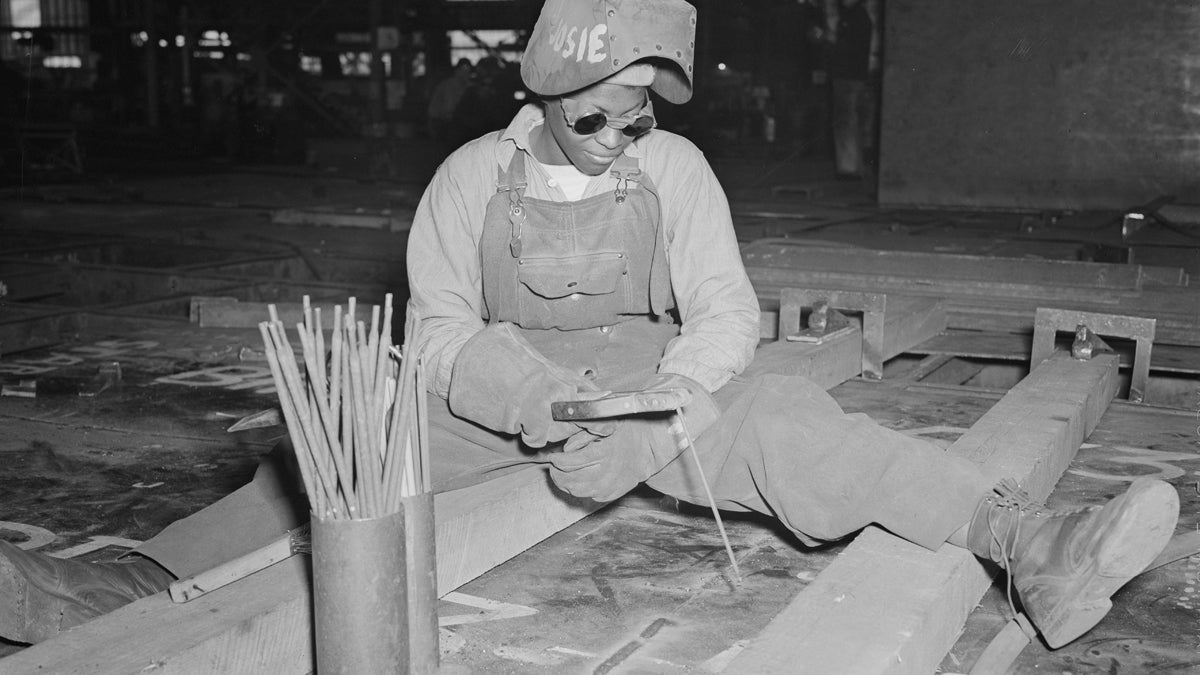Rosie the Riveter: Womanpower in Wartime

Harvey Milk Terminal 1
Rosie the Riveter: Womanpower in Wartime
The Second World War had a profound impact on the lives of working women in American society. After the United States entered the war on December 7, 1941, millions of men left manufacturing jobs for military service and recruiters scoured the country in search of workers to replace them. Women joined the workforce in record numbers and filled industrial positions previously denied to them. Popular culture and propaganda launched the legend of Rosie the Riveter, the anonymous, red-bandanna-clad woman in coveralls who helped build approximately 300,000 aircraft by the war’s end. Her sister Wendy the Welder, outfitted with a steel hood and leather protective gear, wielded an arc welder’s stinger in shipyards along the coasts. Millions of Rosies and Wendies also manufactured tanks, trucks, munitions, and other myriad types of equipment and supplies. Migrating from diverse regions and cultures, women converged on American industrial centers, facing harassment and discrimination along with the challenges of quickly learning skilled techniques that traditionally took years to master. Rosie the Riveter: Womanpower in Wartime will feature collections from Rosie the Riveter / WWII Home Front National Historical Park, along with additions from the Richmond Museum of History and Culture and the Labor Archives and Research Center at San Francisco State University.
[image]
Welder-trainee Josie Lucille Owens helping to construct the Liberty Ship
SS George Washington Carver 1943
Emmanuel Francis (E.F.) Joseph (1900–79)
Kaiser Shipyards, Richmond, California
Courtesy of Library of Congress, Prints and Photographs Division, Washington, D.C.